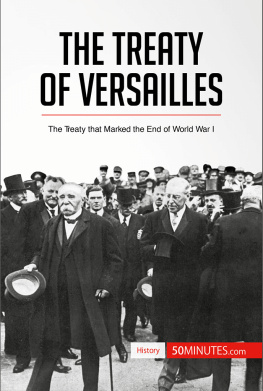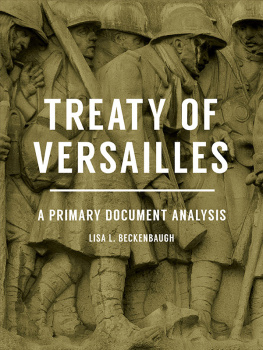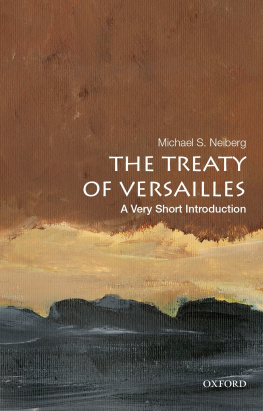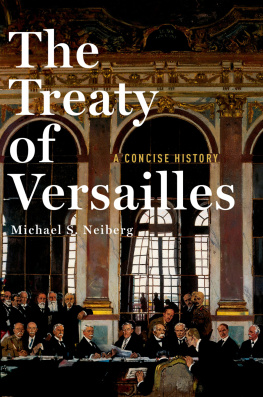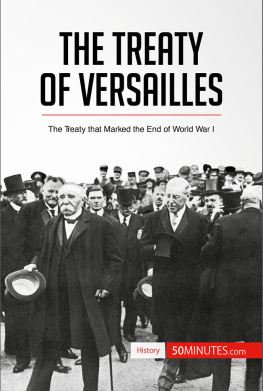Preface
In 1890 the American naval officer and historian Alfred Thayer Mahan published a book that was to have a strong impact on the way that American leaders viewed their place in the world strategically and militarily. It was also to have a profound knock-on effect on the countries of Central America and the Caribbean. As its name suggests, The Influence of Sea Power upon History highlighted the importance of a powerful navy in a states rise to power. Britain and the role of its Royal Navy were held up as a shining example of this.
To a country that was still absorbed in its own land-based expansion westwards, Mahans emphasis on the role of the navy required a major shift in outlook for Washington, one it was nonetheless ultimately willing to adopt. But Mahans influence did not end there. For decades, there had been talk in America about building a canal between the Atlantic and Pacific Oceans, via the isthmus, linking those two giant bodies of water. Such a route would have a major impact on trade routes, lessening reliance on the long and dangerous journey around Cape Horn. There had been considerable discussion about the possible location for such a crossing, with Panama and especially Nicaragua the most likely countries for it.
However, Mahan warned that the building of such a canal would change not just trade routes but the geopolitics of the entire region. In addition to the benefits it would bring, such a waterway could herald latent and yet unforeseen dangers to the peace of the western hemisphere. Mahan noted, it is evident that this now comparatively deserted nook of the ocean will, like the Red Sea, become a great thoroughfare of shipping, and attract, as never before in our day, the interest and ambition of maritime nations. He then warned that the United States is woefully unready to assert in the Caribbean and Central America a weight of influence proportioned to the extent of her interests.
In the following years leaders in Washington were to show vividly that they had taken these warnings to heart as they began to take far greater interest in the affairs of Central American and Caribbean states. This increased attention was to have a dramatic impact on the countries in that region. Not only would a number of them experience direct intervention by the United States and its troops, they would also find themselves catapulted onto the world stage; first, when war broke out in Europe, and then, secondly, during the subsequent attempts to broker the peace in Paris.
Origins 18001900
The influence of geography upon history is always an important one. Nowhere is this truer than for the six Central American and Caribbean countries that were invited to take part in the Paris Peace Conference in 1919. The Central American states of Guatemala, Honduras, Nicaragua and Panama are on the narrow strip of land that joins the two land masses of North and South America. This places them strategically between the Atlantic and Pacific Oceans, a factor that has played a role in their development and history in the last 200 years. The island states of Haiti and Cuba, meanwhile, lie at the gateway between the Caribbean and the Atlantic. Between the two countries the stretch of water known as the Windward Passage is a major shipping route.
There is also another key factor that affects all six countries, which has been crucial not just in their modern history in general but specifically also in their involvement in the signing of the Treaty of Versailles. That crucial quirk of geography is their proximity to the United States of America. It is almost impossible to overstate the importance of the United States to the recent history of these six states. Their invitation to join in the Peace Conference, for example, was almost entirely due to the desire of Washington to have them present. This can be seen from the fact that another Central American state, Costa Rica, which had fulfilled precisely the same entry requirement for being at Paris as these six joining the First World War on the Allies side was specifically excluded because the United States did not want it there. The story of these six small countries is thus intimately entwined with the foreign policy of the Great Power to the north.
Of the six, the four from Central America inevitably share many similarities in geography as well as history. Visitors to this isthmus have usually commented on its remarkable natural beauty, from its Pacific and Caribbean coastlines, many lakes, fertile lands, exotic flora and fauna to its plunging valleys. Linking all the regions countries from Guatemala in the north to Panama in the south is a range of volcanic mountains, adding different climatic and soil variety to the area. The abundance of life and fertility of the land, its stunning landscapes and the temperate climate of much of the highland interior, coupled with its strategic position, have long held out the prospect that the region would become a prosperous area that could rival other, larger regions of the world.
Yet there are geographical as well as more human reasons why Central America remains one of the poorer and, to a large extent, least developed parts of the world. The presence of its tall mountains, some of which reach as high as 14,000 feet, give a striking clue to one of the recurring obstacles to development in past centuries volcanic eruptions and above all earthquakes. The region suffers from substantial tremors on a regular basis. In the 20th century destructive earthquakes occurred on average around once every two-and-a-half years. In February 1976, for example, an earthquake measuring 7.5 on the Richter scale in Guatemala killed around 23,000 people and injured more than 75,000 others. The region is also regularly hit by hurricanes and suffers from torrential rain and mudslides, and on the Caribbean coast in particular has been plagued by a variety of tropical diseases. In addition, it lacks major navigable rivers and its remarkably few deep-water ports mean that communication both within the region and with the outside world has not always been easy.
Central Americas location has, however, made it a meeting point of different cultures, from the north and south and also from the Caribbean. In pre-Conquest times the dominant culture was Mayan, which reached its peak around 600 AD to 900 AD. However, the Mayan culture had relatively little influence in the lands that are today Panama and Costa Rica. Moreover, even where Mayan culture was dominant, it was never centrally organised, such as is seen, for example, with the Aztecs in Mexico. Though they shared a common cultural identity, many Mayan communities lived in considerable autonomy. After the Conquest the population mix of the region contained Amerindians, whites mostly from Spain and mixed-race ladinos (the local word for mestizos).
Of the four Central American countries who sent delegates to Paris, the nation with the biggest indigenous influence is Guatemala, with Amerindians making up around 40 percent of the population. In Honduras, by contrast,







